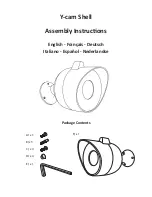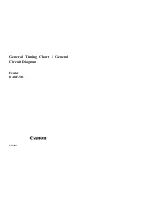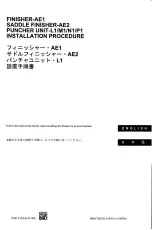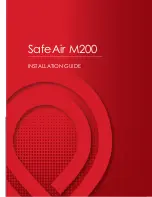
Storage
Period
Charge V/Cell
at 20° C
Charging
Time
Less than 9
months
2,28 V/Cell
More than 72
hours
Up to 1 year
2,35 V/Cell
48-144 hours
1-2 years
2,35 V/Cell
72-144 hours
Batteries kept at normal float charge level within
a string do not require any equalizing charge in
case of partial replacement, in order to narrow
the bandwidth of open-circuit voltages.
2.5 Alternating currents
On recharging up to 2,4 V/cell under operation
modes 2.2 the actual value of the alternating
current is for a very short time permitted to reach
0,1C(A) nominal capacity. In a fully charged
state during float charge or standby parallel
operation the actual value of the alternating
current must not exceed 5 A/100 Ah nominal
capacity.
2.6 Charging currents
During float charge or standby parallel operation
without recharging state the charging currents
are not limited. The charging current should
range between 10 A to 20 A/100 Ah nominal
capacity.
2.7 Temperature
The nominal operation temperature range for
lead-batteries is 10°C to 30° C (best 20°C
±
5K).
Higher temperatures will seriously reduce
service life. All technical data are produced for a
nominal
temperature
of
20°C.
Lower
temperatures reduce the available capacity. The
absolute maximum temperature is 50°C and
should not permanently exceed 40°C in service.
2.8 Temperature-related float charge voltage
and boost charge
The float charge voltage of 2,275V/cell
±0,005V/cell refers to a battery temperature of
20°C. Temperature compensated charging is
required in order to avoid overcharge at high
temperatures
and
undercharge
at
low
temperatures. The recommended temperature
compensation factor is -3mV/cell/°C for float
charge operation. In order to avoid thermal
runaway, it is mandatory to temperature
compensate the float-charge voltage for
temperatures above 40°C. The boost charge
mode can be applied if a quick recharge is
required on condition that the charging current
does not exceed 0,25C(A) and constantly drops
to 0,01C from where normal float charge voltage
should be applied.
2.9 Electrolyte
The electrolyte is diluted sulphuric acid and is
absorbed in glass-matt separator.
3. Battery maintenance and control
Keep the battery clean and dry to avoid leakage
currents. The cleaning of the battery should be
carried out according to the ZVEI-leaflet
“Cleaning of batteries”. Plastic parts of the
battery must be cleaned with pure water without
additives, any organic solvents are prohibited.
At least every 6 months measure and record:
- battery voltage
- voltage of several cells/blocks
- surface temperature of several cells/blocks
- battery-room temperature
If the difference of the average float charge
voltage/cell is exceeding ± 0,1°C/cell within a
string or if the surface temperature-difference
between cells/blocks is exceeding 5K, the
service-agent should be contacted.
Annual measurement and recording:
- voltage of all cells/blocks
- surface temperature of all cells/blocks
- battery-room temperature
- insulation-resistance according to
DIN 43539 part 1
Annual visual check:
- screw connections, any screw connections
without locking devices have to be checked for
tightness
- battery installation and arrangement
- ventilation
4. Tests
Tests have to be carried out according to DIN
43539 part 1 and 100 (draft). Special
instructions like DIN VDE 0107 and DIN VDE
0108 have to be observed. To make sure to
have a confidential power supply, the whole
battery should be exchanged after the utilization
is finished. Take also into account the
temperatures and the operating conditions.
5. Faults
Call the service agents immediately in case of
faults in the battery or the charging unit. The
availability of the recorded data described in
point 3, will be very helpful to find the cause of
failure. A maintenance contract simplifies
trouble shooting.
6. Storage and taking out of operation
To store or decommission cells/batteries for a
longer period of time, they should be fully
charged and stored in a dry frost-free room. To
avoid damage, batteries should be regularly
subjected to supplementary charge cycles in
accordance with 2.4.
7. Transport
VRLA batteries, which by no means show any
kind of damage, are classified a non-dangerous
goods for transportation via rail, lorry see freight
or air (according to GGVS GGVE, IATA (rule
A67), ADR (rule 598), IMDG (rule238.2) and UN
2800 special provisions) if they are safeguarded
during transportation against short circuiting
tossing about, slipping or any damage. Batteries
to be classified under afore-mentioned
paragraph must mandatorily not display any
traces of electrolyte on the exterior of the
battery container. As for VRLA batteries being
damaged, assumed to be leaking of electrolyte
and to be transported under warranty, or
assumed not to be tight in any aspect anymore,
they are to be handled in accordance with
exception regulations of dangerous goods
transportation rules concerned.
Temperature
(°C)
Boost Charging
Voltage
(V/Cell)
Maintenance
Charge Voltage
(V/Cell)
- 10
2,58
2,36
0
2,53
2,33
10
2,48
2,30
20
2,45
2,28
30
2,40
2,24
40
2,34
2,21
8. Technical Data
Type
RPower OGiV L
5 Min.
10 Min.
30 Min.
1h
2h
3h
8h
10h
20h
C1/12
(Ah)
1,60
V/Z
C1/6
(Ah)
1,60
V/Z
C1/2
(Ah)
1,70
V/Z
C1
(Ah)
1,80
V/Z
C2
(Ah)
1,80
V/Z
C3
(Ah)
1,80
V/Z
C8
(Ah)
1,80
V/Z
C10
(Ah)
1,80
V/Z
C20
(Ah)
1,80
V/Z
NLBA1252
1,6
2,2
2,6
2,9
3,3
3,8
4,6
4,7
5,2
NLBA007L
2,2
2,8
3,7
4,3
4,8
5,3
6,3
6,6
7,2
NLBA012L
3,7
5,0
6,4
7,1
8,1
9,2
10,6
11,0
12,0
NLBA017
5,1
6,5
8,7
9,9
11,4
12,2
15,0
15,6
17,0
NLBA026
7,9
10,8
13,6
15,0
16,1
19,7
22,9
23,7
25,0
NLBA028
8,8
11,2
14,8
16,6
18,8
20,2
24,6
25,8
28,0
NLBA033
9,2
11,8
16,3
19,0
22,8
24,8
31,7
33,0
33,6
NLBA040
10,2
13,5
19,2
23,7
27,6
30,0
38,4
40,0
41,0
NLBA045
10,8
14,7
20,7
24,6
31,2
32,4
43,2
44,0
45,0
NLBA050
14,5
20,1
24,3
26,4
32,8
38,4
46,9
50,0
52,0
NLBA055
15,0
21,7
29,8
32,8
38,0
42,6
52,8
55,0
57,0
NLBA060
15,8
21,0
30,0
34,5
41,4
45,0
57,6
60,0
63,0
NLBA065
17,1
23,8
32,2
37,4
45,0
48,6
62,4
65,0
68,0
NLBA075
19,7
26,3
37,5
43,1
51,8
56,1
72,0
75,0
78,8
NLBA080
21,3
29,2
40,3
47,4
55,2
58,8
76,8
80,0
84,0
NLBA090
23,7
31,5
45,0
51,7
62,2
67,5
86,4
90,0
94,6
NLBA100
26,7
36,7
52,0
59,3
69,2
76,5
96,0
100,0
106,0
NLBA110
28,9
38,5
55,0
63,2
76,0
82,5
105,6
110,0
115,6
NLBA120
30,8
41,7
62,5
71,2
83,0
89,7
115,2
120,0
124,0
NLBA134
35,8
48,3
69,0
79,3
92,6
98,4
128,8
134,0
140,0
NLBA150
37,5
55,0
77,0
88,9
103,6
114,6
144,0
150,0
156,0
NLBA180
52,0
72,4
87,3
95,1
118,0
138,0
168,8
180,0
187,2
NLBA200
54,2
71,7
101,0
119,0
138,2
157,2
192,0
200,0
204,0
NLBA260
64,6
87,5
127,0
149,0
172,8
185,1
240,0
250,0
264,0
Technical Data are subject to change.
Schrack Technik GmbH
Seybelgasse 13
A-1230 Vienna
Tel.: +43 1 86685 5900
E-Mail: [email protected]
Fax: +43 1 86685 98888
Internet: www.schrack.at
Version: 10-2013






















